Introduction to Paolo Uccello
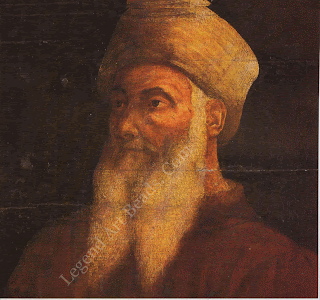 One of the most original and inventive artists of the early
Renaissance, Uccello initially trained as a sculptor with Lorenzo Ghiberti but
turned swiftly to painting after his apprenticeship. Following a short period
in Venice supervising repair work on the San Marco mosaics, Uccello settled in
Florence where he quickly established himself as one of the leading artists of
his day and remained for the rest of his life.
One of the most original and inventive artists of the early
Renaissance, Uccello initially trained as a sculptor with Lorenzo Ghiberti but
turned swiftly to painting after his apprenticeship. Following a short period
in Venice supervising repair work on the San Marco mosaics, Uccello settled in
Florence where he quickly established himself as one of the leading artists of
his day and remained for the rest of his life.
He was commissioned by some of the most influential Families
in Florence, including the powerful Medici, for whom he painted a series of
extraordinary battle--pieces which remain Uccello's obsession perspective and
his solitary nature removed him increasingly from the public eye. Declined into eccentric old age, and his last
recorded commission was unfinished at his death.
The Solitary Eccentric
Sparing little time for family and friends, Uccello devoted
himself to his work. Although few of his paintings survive, he stands out as
being one of the most captivating and ingenious artists of his time.
Paolo Uccello was born in Florence, the son of Dono di Paolo,
a barber surgeon, and his wife Antonia Maria. The exact date of Uccello's birth
is unknown, but in June 1407 he joined the workshop of Lorenzo Ghiberti, then
the foremost sculptor in Florence. Since the usual age for boys to enter their
apprenticeships was 10 or 11, it has generally been accepted that Uccello was
born sometime in 1397, a date which is supported by two of the artist's early
tax returns.
THE EARLY YEARS
When Uccello joined
Ghiberti's workshop it was one of the busiest and most exciting in Florence as,
in 1403, Ghiberti had been awarded the coveted commission to make a pair of
bronze doors for the city's Baptistry a
task which took twenty-one years to complete. Uccello stayed with Ghiberti
until 1415. Initially, his duties in the workshop must have been fairly menial
but by 1412, he had risen to the rank of assistant or journeyman, a position
which allowed him to tackle more responsible tasks, such as preparing
materials, or making small preliminary models after Ghiberti's designs.
It was probably in
Ghiberti's workshop that Uccello first met Donatello, who worked for Ghiberti
briefly in the summer of 1407. Donatello was then a rising young sculptor in
his 20s and Baptistery, Florence
May have had little time for the young assistant. In later
years, however, he was to become one of Uccello's closest friends.
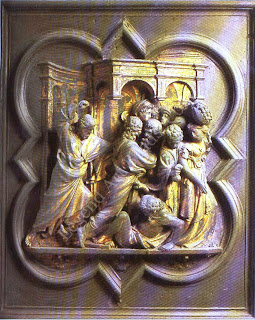 In 1415 Uccello left
Ghiberti's workshop and matriculated as a painter in the Arte dei Medici e
Speziali (the Guild of Doctors and Apothecaries). It was not unusual at this
time for artists to move between the different branches of their trade,
acquiring and practising a range of different skills. Although he had trained
with a sculptor, Uccello moved easily into painting, and as his career
progressed he proved himself to be an artist of great versatility. Membership
of the Guild would have given Uccello the right to set up shop independently
and employ his own assistants, but Uccello was a solitary man and from this
point onwards he seems to have worked on his own. The next 10 years of
Uccello's life remain something of a mystery. No clear records of his activity
exist, either in the form of written documents, or of surviving works. It seems
fairly certain, however, that he stayed in Florence.
In 1415 Uccello left
Ghiberti's workshop and matriculated as a painter in the Arte dei Medici e
Speziali (the Guild of Doctors and Apothecaries). It was not unusual at this
time for artists to move between the different branches of their trade,
acquiring and practising a range of different skills. Although he had trained
with a sculptor, Uccello moved easily into painting, and as his career
progressed he proved himself to be an artist of great versatility. Membership
of the Guild would have given Uccello the right to set up shop independently
and employ his own assistants, but Uccello was a solitary man and from this
point onwards he seems to have worked on his own. The next 10 years of
Uccello's life remain something of a mystery. No clear records of his activity
exist, either in the form of written documents, or of surviving works. It seems
fairly certain, however, that he stayed in Florence.
Gaining more experience as a painter and carrying out minor
commissions for the Church. During these years he must also have gained some
considerable experience of working in mosaic, for in 1425 he was summoned to
Venice by the Venetian government to work on the mosaics in the great Basilica
of San Marco, which had been devastated by fire. In the surviving documents he
is described as a 'master mosaicist', and during his stay in Venice his job
seems to have been largely that of an overseer, supervising and directing the
restoration work. He also produced a mosaic figure of St Peter for the main
facade of the church, and a series of superb decorative roundels for the roof
and pavement of the interior.
THE HUB OF ARTISTIC ACTIVITY
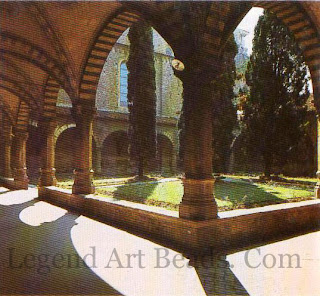
By the beginning of 1431 Uccello was back in Florence,
apparently looking for work. It was a time of great artistic activity in the
city and Uccello must have been anxious to procure a major Commission. Early in 1432 he put himself forward to the
Office of the Cathedral Works, no doubt hoping to share in the series of
prestigious commissions that were coming the way of Ghiberti and Donatello. But
although the Office wrote to the Florentine Ambassador in Venice to enquire
about the quality of Uccello's work there, no immediate commissions seem to
have resulted from the venture. Shortly afterwards, however, probably at the
end of that year, Uccello began work on his earliest surviving painting
commission - two frescoes of Old Testament scenes for the cloister of
Santa Maria Novella, a large Dominican church in the north of Florence. These
enchanting and imaginative frescoes seem to have Lonboliaawd reputation in
Florence. In April 1434 he was able to buy a house in the city, in the quarter
of Santa Lucia d'Ognissanti, and in 1436 he finally obtained a commission from
the Office of the Cathedral Works. In May of that year he was asked to paint a
fresco for the Cathedral, commemorating the great Military leader or
'condottiere' Sir John Hawk wood.
The fresco occupied Uccello until August and, although his
patrons made him paint the figures twice, they were clearly pleased with the
end result, for in 1443 he was again at work in the Cathedral. This time
Uccello was asked to paint a clock-face, including the heads of four prophets,
for the inside wall of the west end of the Cathedral. In the same year he was
asked to design four cartoons for stained glass windows for the drum of
Brunelleschi's dome, a commission which saw him working side by side with his
old friend and master Ghiberti.
AN ENDEARING CHARACTER
By all accounts Uccello was a solitary and eccentric man,
absorbed in his experiments with perspective, and with little time for his
family and friends. From Vasari's Life of Uccello, written in the 16th century,
he emerges as an odd but endearing
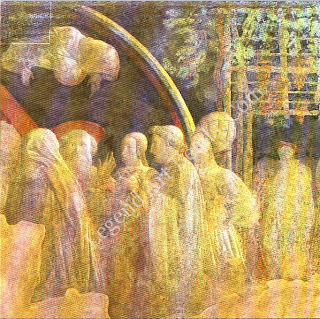 Character, with a whimsical sense of humour. In the late
1440s Uccello was working on a series of frescoes showing Scenes from Monastic
Life in the church of San Miniato al Monte on the outskirts of Florence.
According to Vasari, Uccello soon became dissatisfied with his working
conditions, since the abbot fed him exclusively on cheese. Uccello fled from the
scene, hotly pursued by two friars, who asked him why he was leaving. Uccello
repied: 'You've brought me to such a state that I not only run away from the
sight of you, but I can't even go where there are carpenters working your dim-witted abbot has filled me so full of
cheese that I'm frightened they'll use me to make glue. If he carries on like
this, I won't be Paolo Uccello any more, I'll be pure cheese.
Character, with a whimsical sense of humour. In the late
1440s Uccello was working on a series of frescoes showing Scenes from Monastic
Life in the church of San Miniato al Monte on the outskirts of Florence.
According to Vasari, Uccello soon became dissatisfied with his working
conditions, since the abbot fed him exclusively on cheese. Uccello fled from the
scene, hotly pursued by two friars, who asked him why he was leaving. Uccello
repied: 'You've brought me to such a state that I not only run away from the
sight of you, but I can't even go where there are carpenters working your dim-witted abbot has filled me so full of
cheese that I'm frightened they'll use me to make glue. If he carries on like
this, I won't be Paolo Uccello any more, I'll be pure cheese.
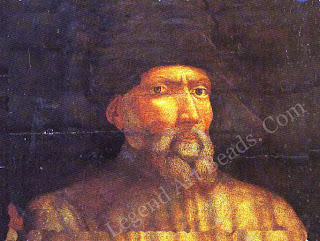
Around 1445 Uccello made a second trip to northern Italy,
this time to Padua, to join Donatello. Donatello was renowned for his
generosity and gracious manner, and seems to have tolerated Uccello's eccentric
ways. He shared with Uccello a consuming interest in perspective, although he
often teased his friend about his extraordinarily detailed perspective
drawings, saying that such things were 'only useful in marquetry'.
Shortly after Uccello arrived in Padua, Donatello began work
on a series of bronze reliefs for the High Altar of Sant' Antonio. Despite his
early experiences with Ghiberti, Uccello does not seem to have actively
participated in the project. Nonetheless, the reliefs impressed him deeply,
with their sophisticated use of perspective, and the two artists must have
discussed the work on the altar at length.
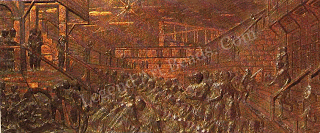 Uccello himself quickly found work in the city. According to
later chroniclers he painted some figures of giants in chiaroscuro for a
private house, the Casa Vitaliani, and an illusionistic ceiling for the Peruzzi
family. Sadly, neither of these works has survived. Uccello probably returned
to Florence in 1447. Almost immediately he began work again in the cloister at
Santa Maria Novella, painting two more frescoes in the series of Old Testament
scenes. These frescoes saw Uccello at the height of his
creative power, and are his most spectacular works. Unfortunately, like many of
his works, these frescoes are considerably damaged. Through a series of unhappy
accidents, an unusually high proportion of Uccello's works have
Uccello himself quickly found work in the city. According to
later chroniclers he painted some figures of giants in chiaroscuro for a
private house, the Casa Vitaliani, and an illusionistic ceiling for the Peruzzi
family. Sadly, neither of these works has survived. Uccello probably returned
to Florence in 1447. Almost immediately he began work again in the cloister at
Santa Maria Novella, painting two more frescoes in the series of Old Testament
scenes. These frescoes saw Uccello at the height of his
creative power, and are his most spectacular works. Unfortunately, like many of
his works, these frescoes are considerably damaged. Through a series of unhappy
accidents, an unusually high proportion of Uccello's works have
Been
lost completely, or damaged almost beyond recognition. This makes it easy to
forget that Uccello was one of the greatest painters of the 15th century, and
was rarely short of employment.
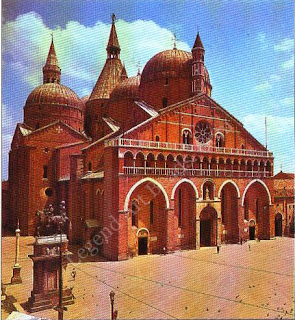
Later chroniclers testify to a steady flow of commissions,
both from the Church and from discerning private patrons. The influential
merchant and collector Giovanni Rucellai proudly listed works by Uccello in an
inventory of his possessions which includes 'objects of sculpture and painting
by the hand of the best masters not only in Florence but in Italy as a whole'.
During the 1450s Uccello was working for the Medici family, painting a series
of battle-pieces which are now his best-known works. As part of a series of
decorative schemes for their palace on the Via Larga, the Medici commissioned
from Uccello three panels showing scenes from the battle of San Romano,
together with a scene from the legend of Paris, and a battle of lions and
dragons. It may also have been for the Medici, possibly Lorenzo, that Uccello
painted his enchanting panel of a hunt.
]
A RELUCTANT FAMILY MAN
In 1453 Uccello's wife Tommasa gave birth to a son, who was
named Donato. It is not known when Uccello married, but Tommasa must have been
considerably younger than her husband, for by this time Uccello was already 56
years old. Three years later the couple had a daughter, Antonia, who was to
follow in her father's footsteps. In later life she became a Carmelite nun and
worked as a painter within her order, one of the few women artists recorded in
the 15th century. Beyond these few details we know nothing of Uccello's home
life. According to Vasari, his wife complained that she could never tear
Uccello away from his work. He would sit up late into the night working on his
perspective studies, and when his wife called him to bed he would simply reply
'Oh, what a wonderful thing is perspective!'
AN UNFINISHED WORK
In 1463 Uccello went to Urbino, accompanied by the young
Donato. The project which took him to the city was a commission to paint an
altarpiece showing the 'Institution of the Eucharist' for the Confraternity of
Corpus Domini. By the time he returned to Florence three years later, he had
only painted the predella of the altarpiece which was later completed by a
Flemish artist working at the Urbinese Court.
There is evidence to suggest that by this time Uccello felt
his creativity drying up. He was now over 70 years old, and by his own account
he had difficulty in working. In his tax return of August 1469, Uccello wrote:
'I am old and without means of livelihood, my wife is ill and I can no longer
work.' Uccello lived for another six years. On 11 November 1475 he made his
will, and died a month later, on 12 December, at the age of 78. The following
day he was buried in his father's grave, in the church of Santo Spirit°.
Writer-Marshall Cavendish
 One of the most original and inventive artists of the early
Renaissance, Uccello initially trained as a sculptor with Lorenzo Ghiberti but
turned swiftly to painting after his apprenticeship. Following a short period
in Venice supervising repair work on the San Marco mosaics, Uccello settled in
Florence where he quickly established himself as one of the leading artists of
his day and remained for the rest of his life.
One of the most original and inventive artists of the early
Renaissance, Uccello initially trained as a sculptor with Lorenzo Ghiberti but
turned swiftly to painting after his apprenticeship. Following a short period
in Venice supervising repair work on the San Marco mosaics, Uccello settled in
Florence where he quickly established himself as one of the leading artists of
his day and remained for the rest of his life.  In 1415 Uccello left
Ghiberti's workshop and matriculated as a painter in the Arte dei Medici e
Speziali (the Guild of Doctors and Apothecaries). It was not unusual at this
time for artists to move between the different branches of their trade,
acquiring and practising a range of different skills. Although he had trained
with a sculptor, Uccello moved easily into painting, and as his career
progressed he proved himself to be an artist of great versatility. Membership
of the Guild would have given Uccello the right to set up shop independently
and employ his own assistants, but Uccello was a solitary man and from this
point onwards he seems to have worked on his own. The next 10 years of
Uccello's life remain something of a mystery. No clear records of his activity
exist, either in the form of written documents, or of surviving works. It seems
fairly certain, however, that he stayed in Florence.
In 1415 Uccello left
Ghiberti's workshop and matriculated as a painter in the Arte dei Medici e
Speziali (the Guild of Doctors and Apothecaries). It was not unusual at this
time for artists to move between the different branches of their trade,
acquiring and practising a range of different skills. Although he had trained
with a sculptor, Uccello moved easily into painting, and as his career
progressed he proved himself to be an artist of great versatility. Membership
of the Guild would have given Uccello the right to set up shop independently
and employ his own assistants, but Uccello was a solitary man and from this
point onwards he seems to have worked on his own. The next 10 years of
Uccello's life remain something of a mystery. No clear records of his activity
exist, either in the form of written documents, or of surviving works. It seems
fairly certain, however, that he stayed in Florence. Character, with a whimsical sense of humour. In the late
1440s Uccello was working on a series of frescoes showing Scenes from Monastic
Life in the church of San Miniato al Monte on the outskirts of Florence.
According to Vasari, Uccello soon became dissatisfied with his working
conditions, since the abbot fed him exclusively on cheese. Uccello fled from the
scene, hotly pursued by two friars, who asked him why he was leaving. Uccello
repied: 'You've brought me to such a state that I not only run away from the
sight of you, but I can't even go where there are carpenters working your dim-witted abbot has filled me so full of
cheese that I'm frightened they'll use me to make glue. If he carries on like
this, I won't be Paolo Uccello any more, I'll be pure cheese.
Character, with a whimsical sense of humour. In the late
1440s Uccello was working on a series of frescoes showing Scenes from Monastic
Life in the church of San Miniato al Monte on the outskirts of Florence.
According to Vasari, Uccello soon became dissatisfied with his working
conditions, since the abbot fed him exclusively on cheese. Uccello fled from the
scene, hotly pursued by two friars, who asked him why he was leaving. Uccello
repied: 'You've brought me to such a state that I not only run away from the
sight of you, but I can't even go where there are carpenters working your dim-witted abbot has filled me so full of
cheese that I'm frightened they'll use me to make glue. If he carries on like
this, I won't be Paolo Uccello any more, I'll be pure cheese. Uccello himself quickly found work in the city. According to
later chroniclers he painted some figures of giants in chiaroscuro for a
private house, the Casa Vitaliani, and an illusionistic ceiling for the Peruzzi
family. Sadly, neither of these works has survived. Uccello probably returned
to Florence in 1447. Almost immediately he began work again in the cloister at
Santa Maria Novella, painting two more frescoes in the series of Old Testament
scenes. These frescoes saw Uccello at the height of his
creative power, and are his most spectacular works. Unfortunately, like many of
his works, these frescoes are considerably damaged. Through a series of unhappy
accidents, an unusually high proportion of Uccello's works have
Uccello himself quickly found work in the city. According to
later chroniclers he painted some figures of giants in chiaroscuro for a
private house, the Casa Vitaliani, and an illusionistic ceiling for the Peruzzi
family. Sadly, neither of these works has survived. Uccello probably returned
to Florence in 1447. Almost immediately he began work again in the cloister at
Santa Maria Novella, painting two more frescoes in the series of Old Testament
scenes. These frescoes saw Uccello at the height of his
creative power, and are his most spectacular works. Unfortunately, like many of
his works, these frescoes are considerably damaged. Through a series of unhappy
accidents, an unusually high proportion of Uccello's works have 

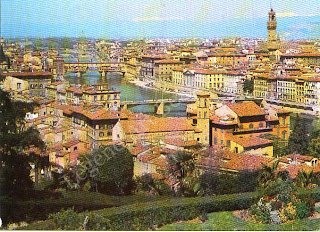



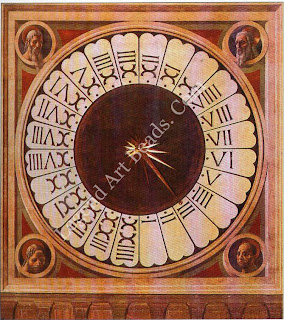
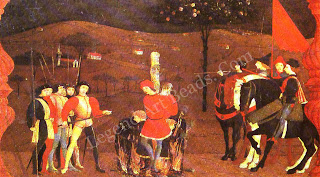










0 Response to "The Paolo Uccello - Artist's Life"
Post a Comment